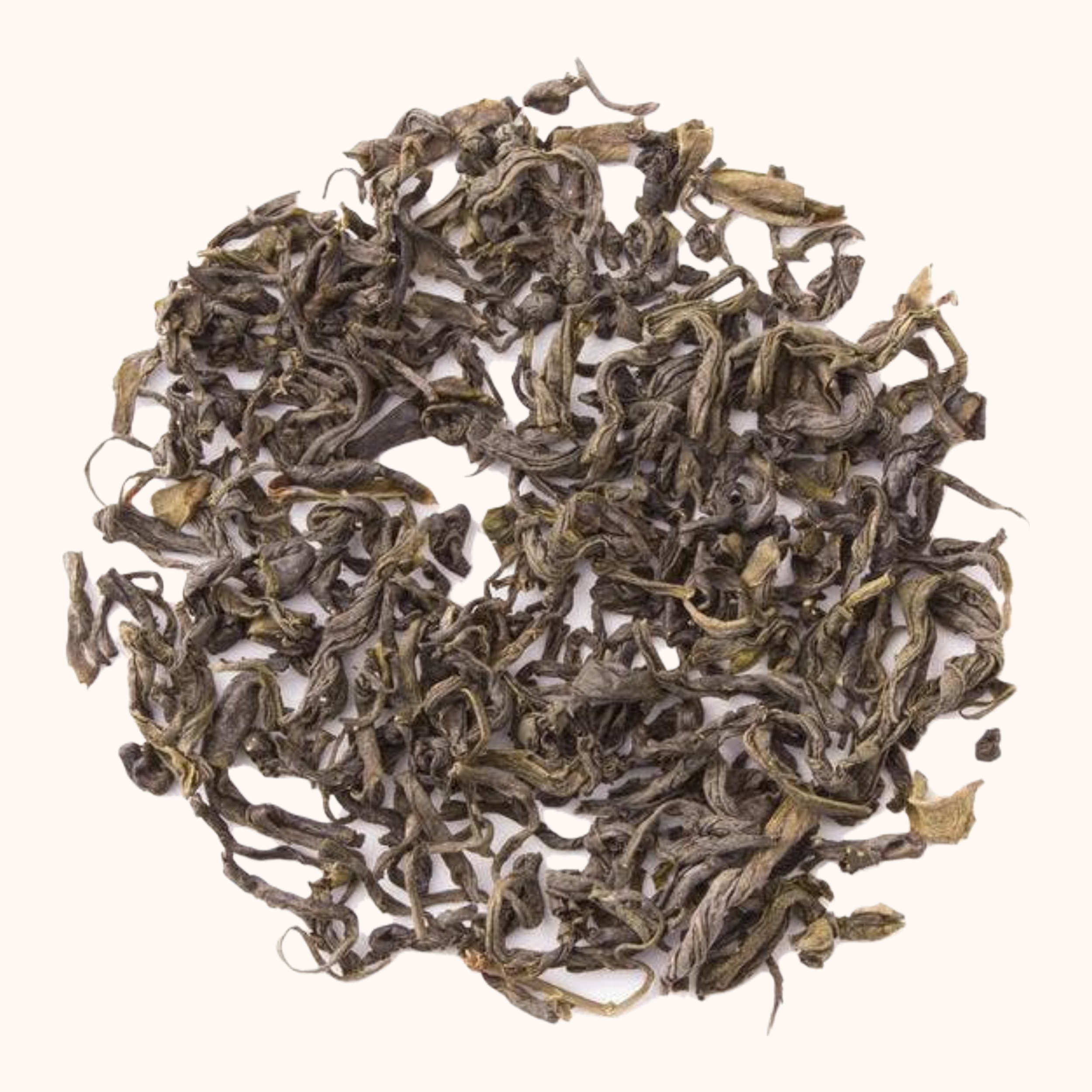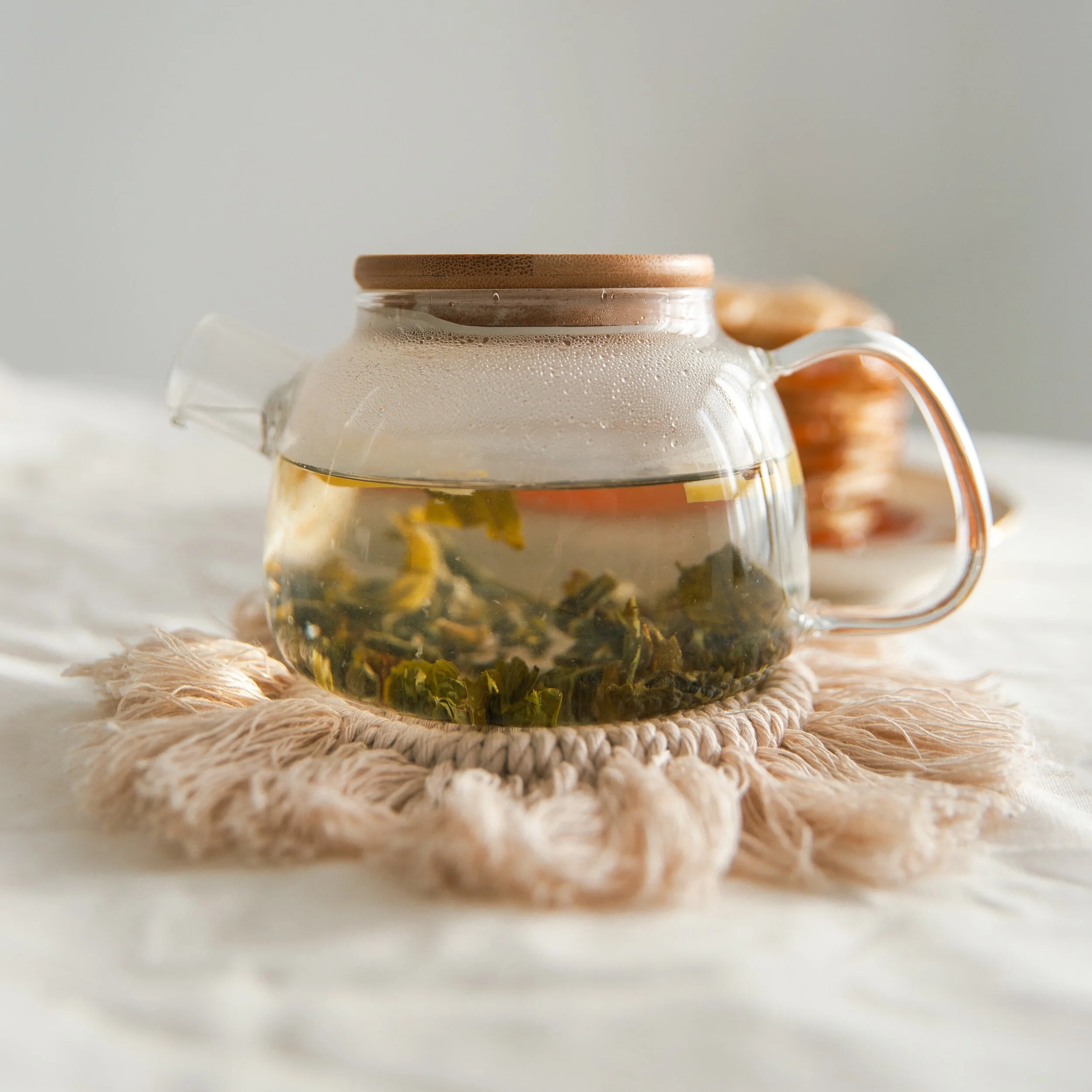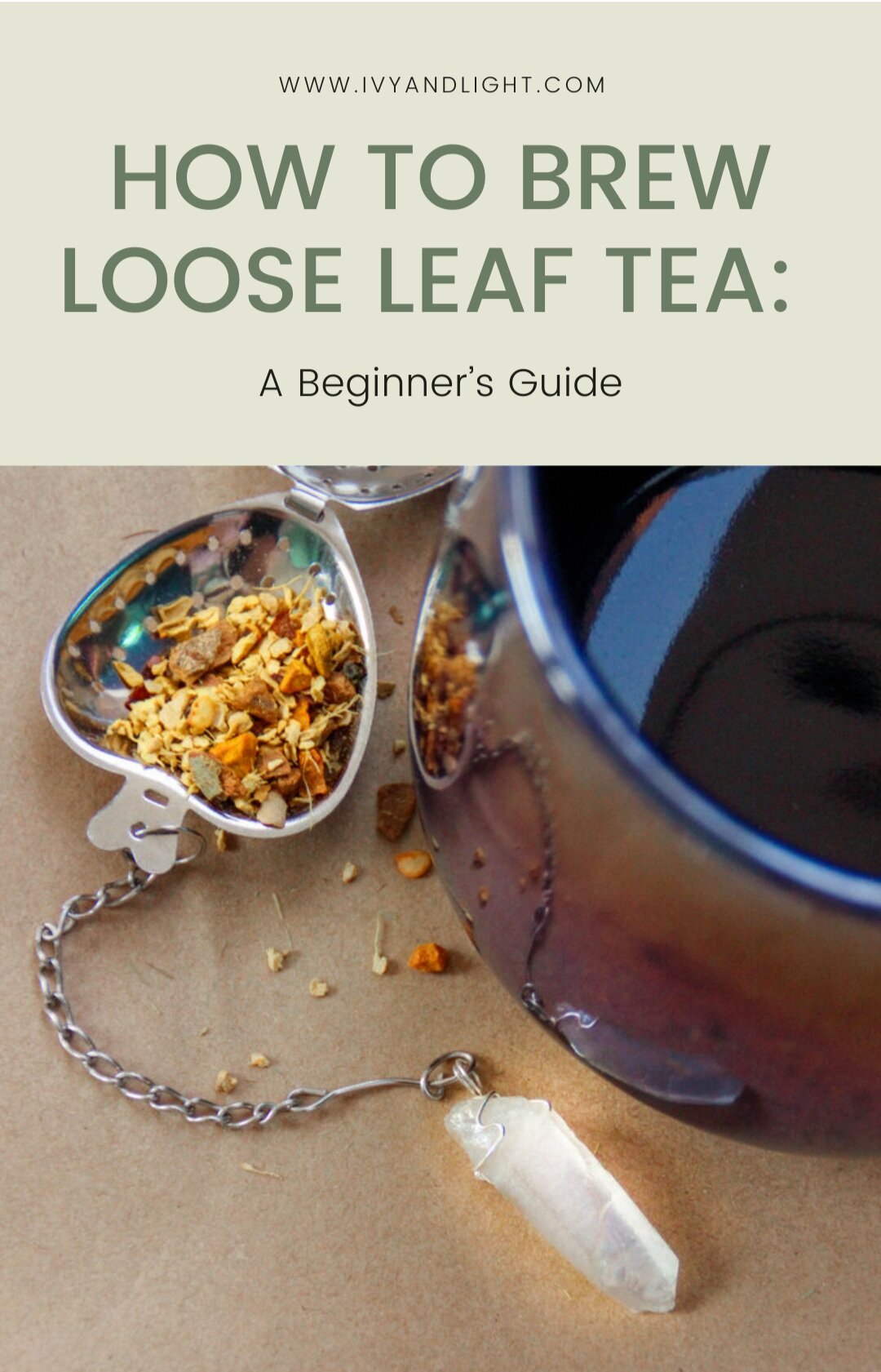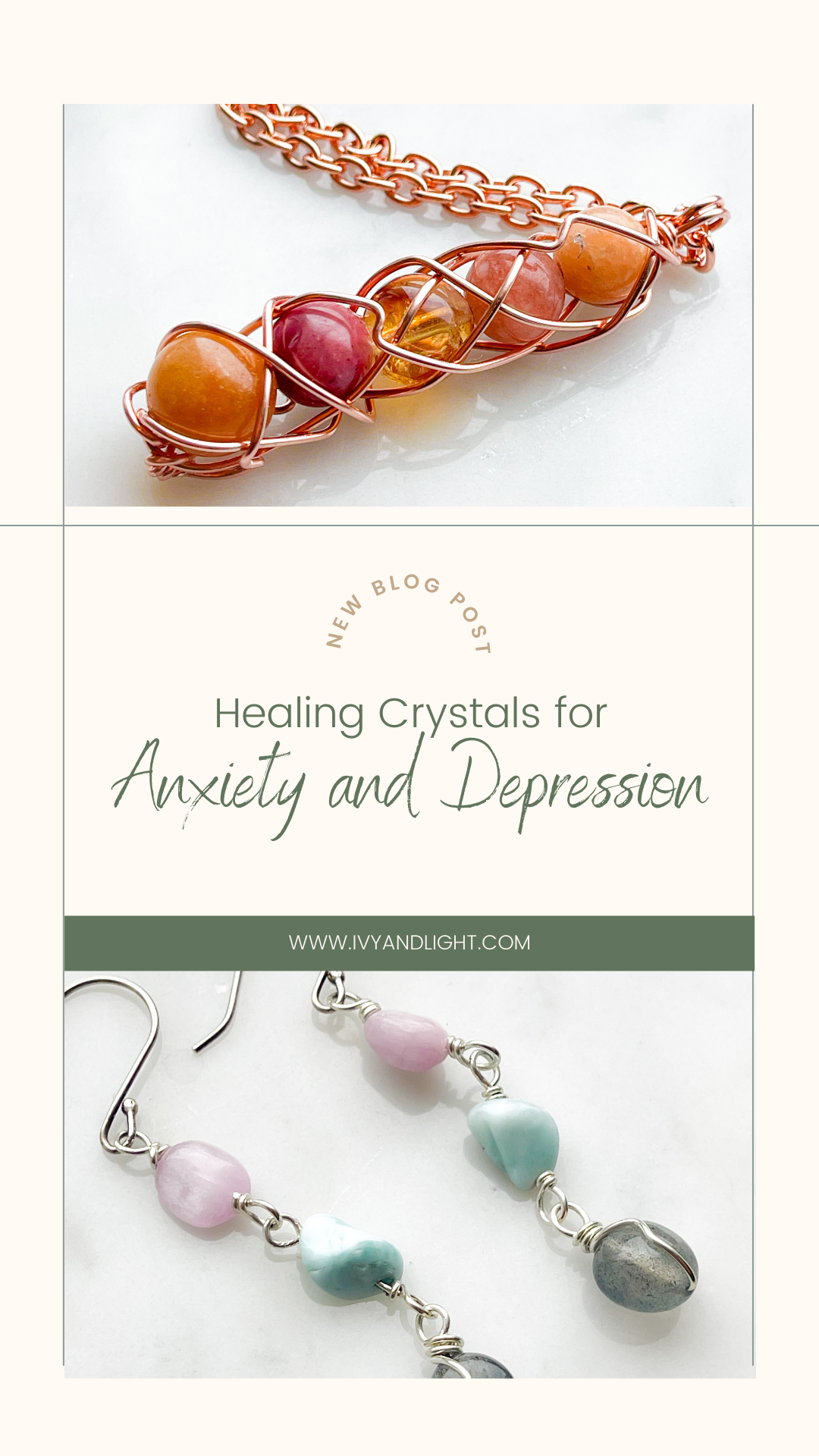6 Reasons Why Loose Leaf Tea is Superior to Tea Bags
Growing up in America and much of the industrialized world, we’ve become accustomed to prioritizing convenience over quality for everyday goods. From instant coffee to fast food, the average person has been conditioned to accept an objectively worse product for the sake of time, price, and effort. But when we’re concerned with our long term wellness and are striving to live an elevated lifestyle, not to mention reduce our carbon footprint, why not try to break free of these old habits? One such habit is the consumption of tea bags.
Tea bags are ubiquitous. They are found in every supermarket tea-and-coffee aisle, at every hotel’s continental breakfast, in restaurants, at cafes, at the office, and offered to us at the homes of friends and family. But just as many begin to question whether the price we pay for convenience is worth it, many are wondering how tea fits into this picture. The also-easy, tastier, and healthier alternative to tea bags is loose leaf tea. While some might find loose leaf tea intimidating or cumbersome, learning to brew your own real tea is merely a matter of habit, and with the availability of more loose leaf tea steeping devices than ever before, it has become simpler than ever. Just as many of us are making our own drip coffee and paying more attention to what we put into our bodies, our tea habits can follow suit.
Let’s look at 6 reasons why loose leaf tea is better than tea bags:
Reason 1: Quality
Consuming tea in its most natural and whole form as opposed to a store-bought tea bag comes with many benefits. Freshness, flavor, and nutritional benefits are just a few. But the most apparent and perhaps important benefit to loose leaf tea versus tea bags is quality. Because you can’t actually see what’s in a tea bag, many companies take the lack of transparency as a license to fill them with dust and fannings. Fannings are essentially tea dust—tea leaves ground up to a near-powder using industrial machinery. And did you know that when you grate or finely break a tea leaf, it quickly loses its aroma and naturally occurring oils? Fannings are often ground beyond recognition, leaving it flavorless and lacking many of its inherent nutrients, taste, and other benefits. And in turn, because producers know this, they begin to compensate.
Reason 2: Health Benefits
What is loose leaf tea if not a delicious beverage that contributes to a healthy, balanced lifestyle? We know the “what” when it comes to the perks of your daily cup of tea, but most of us could use a little brush-up on the “how” when it comes to its health benefits.
There are two key naturally occurring chemical compounds that are found in many teas that make them a health powerhouse: Polyphenols (antioxidants) and L-Theanine. These two are some of nature’s most potent tools for immunity, relaxation, heart health, and overall wellness. Instead of a reliance on Western medicine as the end-all, be-all of health, many in the Eastern world and beyond practice exercise, wholesome diet, and loose leaf tea-drinking as natural, daily preventative habits.
Polyphenols (antioxidants) are found in highest concentration in green tea, although they are strongly present in white, black, and oolong varieties as well.
This element within the tea makes it an amazing immune booster and fights free radicals in the body, potentially preventing all types of cell damage and aging. For strongest antioxidant hit, there’s no better source than our organic green tea, a pure green tea that delivers green teas benefits.
L-Theanine has positive effects on mood, concentration, and mental health. It helps keep your brain going, and your brain keeps your body going. Super-high levels of L-Theanine are found in various types of tea, including green (that means matcha, too), white, black, and oolong teas.
Reason 3: Flavor
As with anything, as quality is compromised, so is flavor. Traditional tea production uses methods like hand-plucking, sorting, and rolling, while the tea artisan employs specific techniques that result in tea with nuanced and complex flavor profiles. When the leaves are broken up in mass-production, the flavors, aroma, and essential oils dissipate faster. Along with this, fannings have significantly more surface area that contacts the water. This is important; the broken leaf won't leave you with a deep, complex, nuanced cup of tea, but rather a dull, bland, one-dimensional one.
Reason 4: Artificial Flavoring & Additives
How do you make up for a dull, flavorless tea? Additives, of course. Often artificial ingredients adulterate tea bags for taste and color. In addition to these potentially harmful additives, other harmful chemicals coat the actual tea bag; specifically, paper tea bags potentially contain dioxin or epichlorohydrin, and the bag is likely bleached in chlorine. When you leave a tea bag in boiling water, these chemicals are readily absorbed into the water and then straight into your bloodstream, and quite easily since it’s a liquid.
Reason 5: A Plastic-Free Brew
What about the more glamorous, high-end tea pyramids and other silken sachets? Although these are fancier from a host’s perspective and more visually appealing, there is great recent concern about the leaching of microplastics into your cup of tea. As the BBC reported, researchers at McGill University in Canada have found that “‘particles released from the tea bag packaging are several orders of magnitude higher than plastic loads previously reported in other foods,’ according to the study, which was published by the journal of Environmental Science and Technology.” For years we have been warned not to drink from a disposable plastic water bottle if it’s been sitting in the heat. And yet, it is still common practice to do this with tea bags.
Reason 6: A Greener Lifestyle
When considering something bigger than ourselves (ie the Earth), it is crucial to look at how waste plays into our daily tea routines. Not all tea bags are fully compostable since they contain microplastics and other materials besides paper, which means they will sit in landfills for long periods of time, contributing to air, land, and sea pollution. And even those tea bags that claim to be biodegradable might not be. Not to mention the carbon emissions that go into creating mass-market individual tea bags! The answer, then, lies simply in loose leaf tea. Sold in batches without any sort of wrapping aside from the single container it’s in (which can be quite large), loose leaf tea is certainly the greener choice.
Finding your perfect Loose Leaf Brew
Brewing tea, whether it’s for an individual cup or in a larger tea pot, is an easy process and can be quite beautiful. Once you choose a brand you trust, you can have fun trying out different flavors, styles, and healing benefits. Learn how to brew the perfect cup of tea in our Beginner’s Guide.
Each Heavenly Tea Leaves tea provides individually tailored instructions depending on the brew. Use the opportunity to invest in some beautiful, reusable and long-lasting teaware, and enjoy your next wholesome brew!
This post was adapted, with permission, from the Heavenly Tea Leaves blog.


















